Patina – a word much loved by antique dealers and hopeful sellers on Ebay. But is it simply just another dirty word for… well, dirt?
As regular readers know, I love a good old clock. The dirtier the clock when it arrives on my workbench, the better. It is the pleasure of the challenge, of turning something that’s utterly neglected – a sad reject – into something that has all the potential to be treasured – to go from the broken to the functional and perhaps even end up being a thing of beauty.
But how far is it right to go in ‘making good’? If you believe some antique dealers, it is actually the patina that gives the item its value, reaffirms its heritage, embodies its character. Take away the patina and the magic, the mystery and the value is gone.
The brilliant Nova Scotia clock-blogger, Ron Joiner, (if you haven’t read him, you should) takes the opposite view. Patina, he says, is just another word for dirt. And it needs removing. Look at the restoration work that he carries out on many of the clocks in his collection and you will see that he has a point. He can turn a tragic no-hoper of a clock case into something fit to grace any room.
I’m torn. Let’s explore.
Taking the shine off patina?
What about that word – Patina? What does it actually mean? Even that is not easy to pin down. Put aside the scientific definition – ‘a blue green layer that forms on copper, brass or bronze’. Concentrate instead on the way the layman uses it. The Cambridge Dictionary will tell you it is ‘a thin surface layer that develops on something because of use, age or chemical action’.
Collins gets tighter – ‘The patina on an old object is an attractive soft shine that has developed on its surface, usually because it has been used a lot.’
But the Cambridge Dictionary also offers a more sinister take, adding a new dimension to the concept – ‘patina is something that makes someone or something seem to be something that they are not’.
Is the visible layer of age so beloved of many actually trying to make the item something it is not – less a layer of valuable history, more a façade, a ruse to inflate the price of an object for gain?
Solving the dilemma
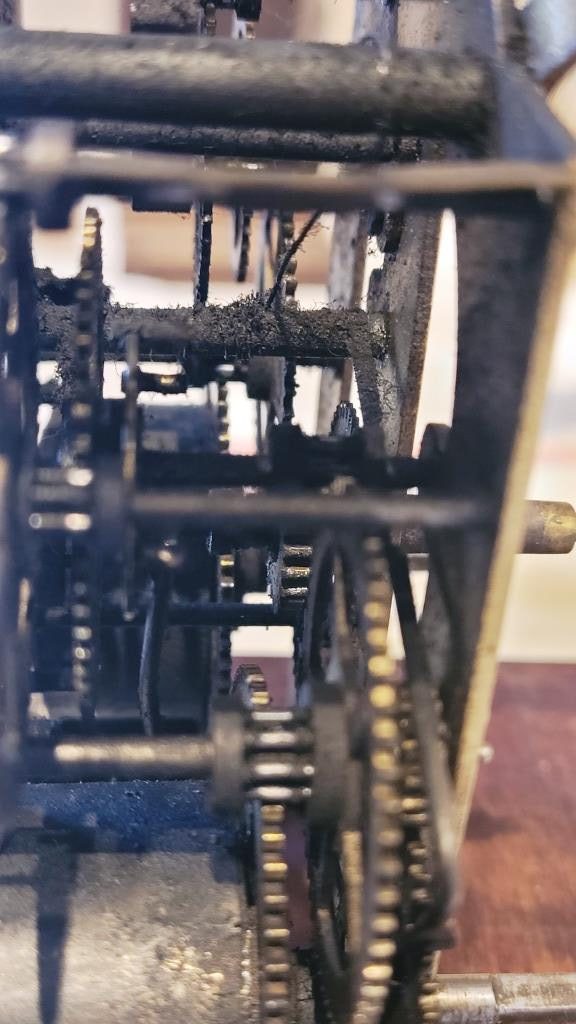
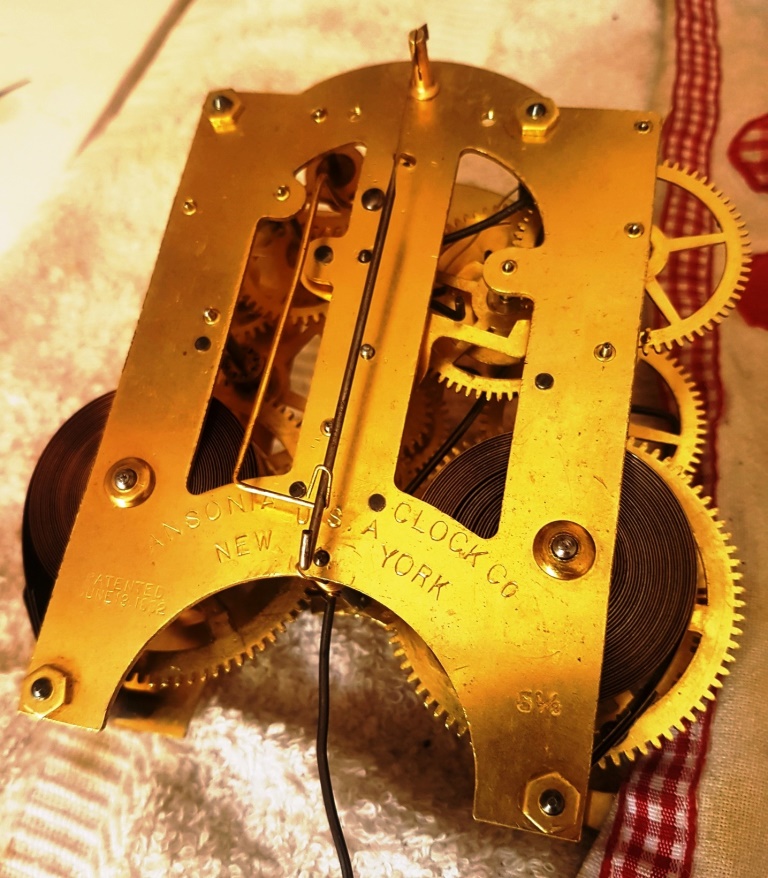
These two American Ansonia Tunis clock movements illustrate the two sides of the argument. Look at one. It is pristine after a thorough ultrasonic clean in specialist clock cleaning chemicals and reassembled to work perfectly. It is as good, almost, as it was when it was first sold, around 120 years ago.
Then look at the other – so caked in an abrasive mixture of oil and dirt that it would be risky to keep it running, even though, surprisingly, it runs very well. Perhaps not quite as well as the day it was bought – precisely 128 years, 10 months and 15 days ago as I write this blog.
There is – and I’m with Ron on this – an irrefutable argument for cleaning it. Clocks deserve to be running, and to keep them running they need to be clean. Otherwise the mix of oil and dust works as a grinding paste. This causes the steel pivots to wear the brass pivot holes from round to oval. That puts all of the wheels in the clock out of alignment, leading it to stop. Part of the process of rectifying the problem is called re-bushing – making oval holes round again.
Case for the defence
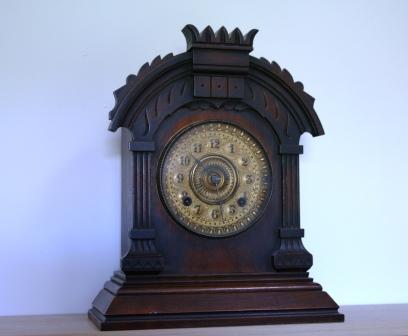
The case is blackened too from decades, one would guess, sitting on a mantelpiece above an open coal fire. The label on the back, indicating it is an eight day Tunis clock by The Ansonia Clock Company of New York, is flaked and charred. Is that patina, or just dirt needing to be removed to show the glory of the clock that John Millar bought on 31st December in 1892?
Hold on a minute though? How do I know that the clock was sold and bought on that specific day?
I know because on the inside of the case door, it says so. He bought it at Bridge Street in Sunderland from a Mr Ronnison. As it happens, it was a Saturday – I’ve checked.
And John Millar took the trouble to write that on the inside of the door too.
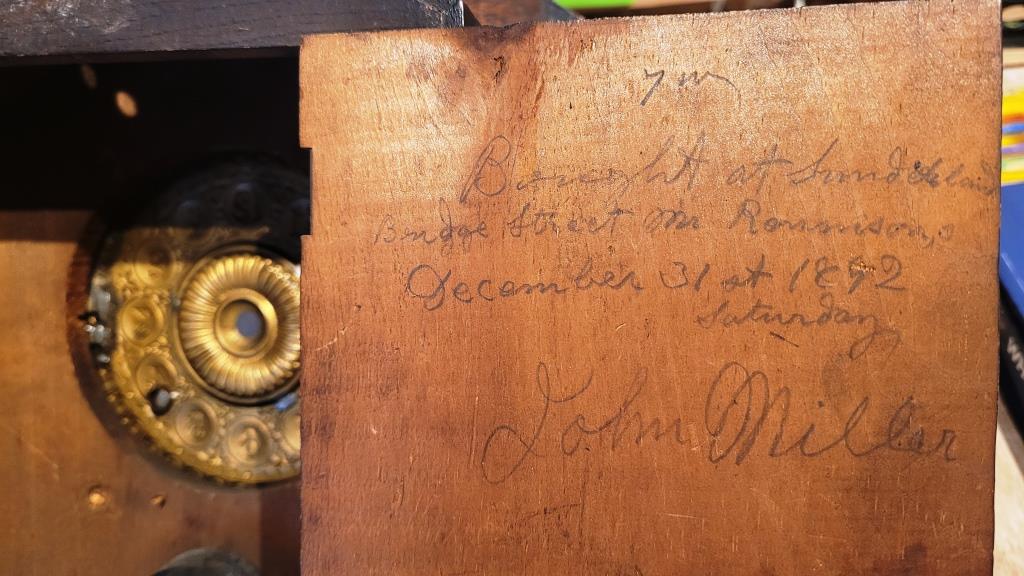
Anything more than a superficial cleaning of the case would risk erasing that inscription and would almost certainly lose the last vestiges of the label which must have so impressed him on purchase. Something of the clock – something of its intrinsic and unique character – would be lost. It would no longer be the clock it became. Here is a case, literally, where patina has its place.
I’m lucky. I have two Ansonia Tunis mantel clocks. And whilst the movement from John Millar’s clock gets the ultrasonic treatment, the case of the other might just get a thoroughly good brushing down and a coating of shellac, hopefully with some expert guidance from Ron Joiner.
A suitable case for treatment
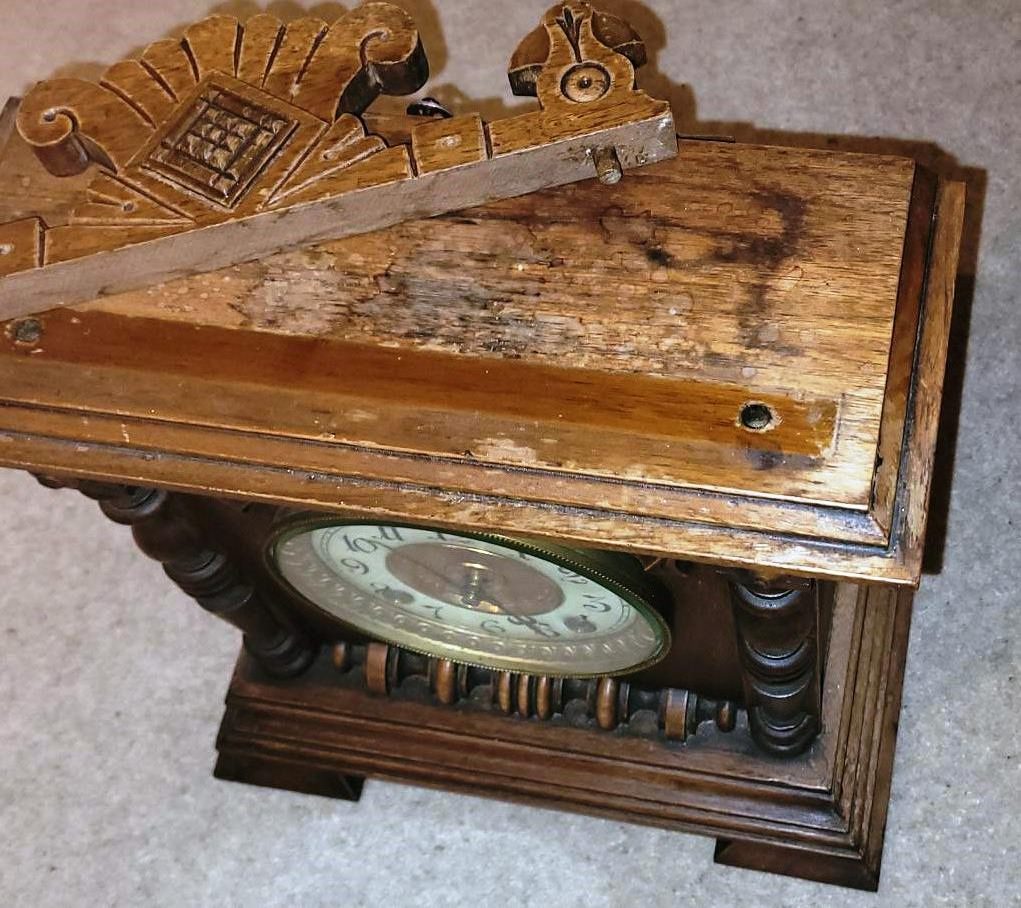 And here is another one – again, an Ansonia clock about which you can read a little more here.
And here is another one – again, an Ansonia clock about which you can read a little more here.
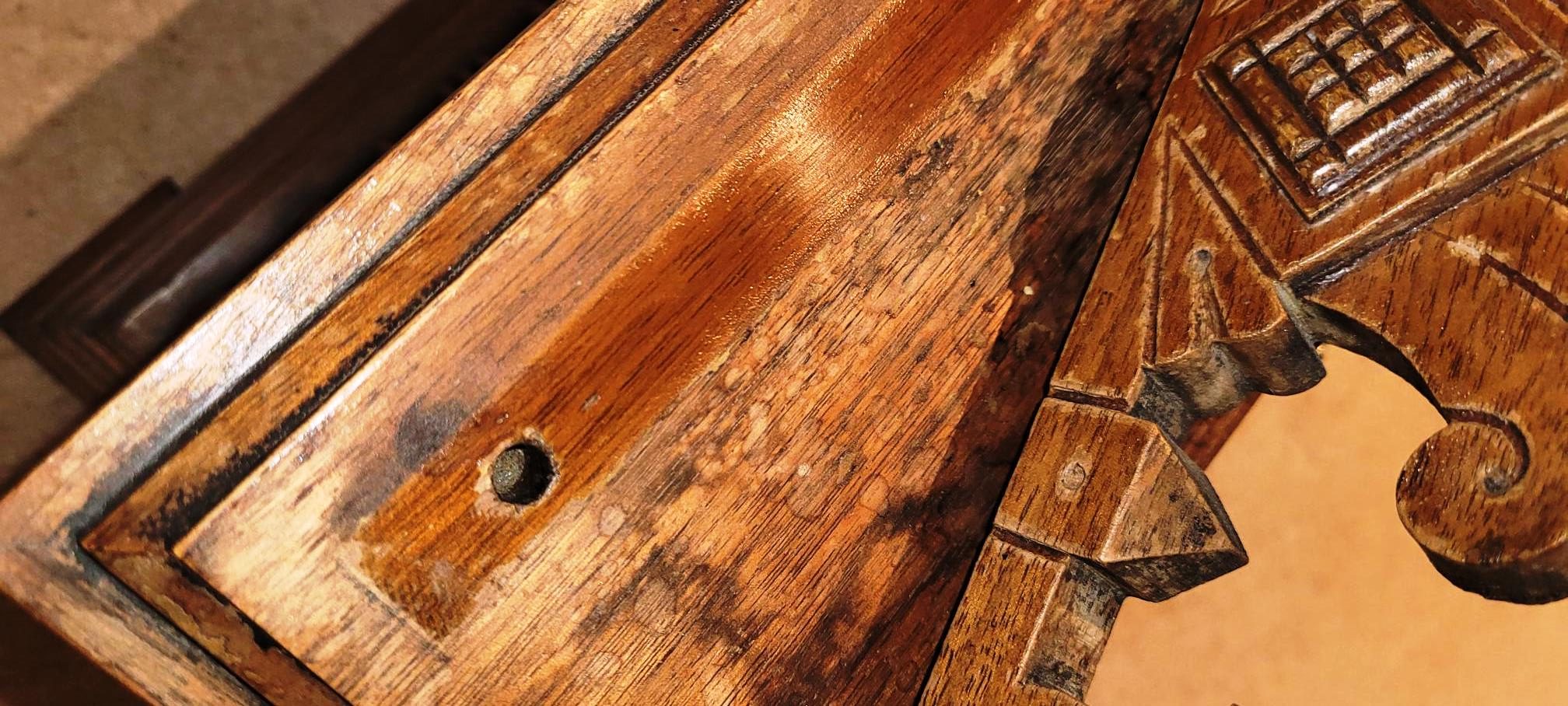
Look at the top of the case. The pediment, now removed to expose the original surface, shows just how faded by time and damaged by sunlight and water spills the exposed surface has become. Does that ‘patina’ add character or take away some of the clock’s appeal?
And how can I possibly return the rest of the case to that fine tone and gloss without it looking faked?
What do you think? All advice gratefully received.
Thanks for the shout out Hugh. My end goal is minimal invasive intervention which means that I will service a movement and address wear issues where necessary. I will refresh the case if it is grimy and requires a good cleaning. I am not a strong believer in patina as you rightly pointed out. I believe that some amount of intervention is not only necessary but desired by collectors and I also believe that there are situations where a wholesale ground-up restoration is the only option. Great article, thought-provoking.